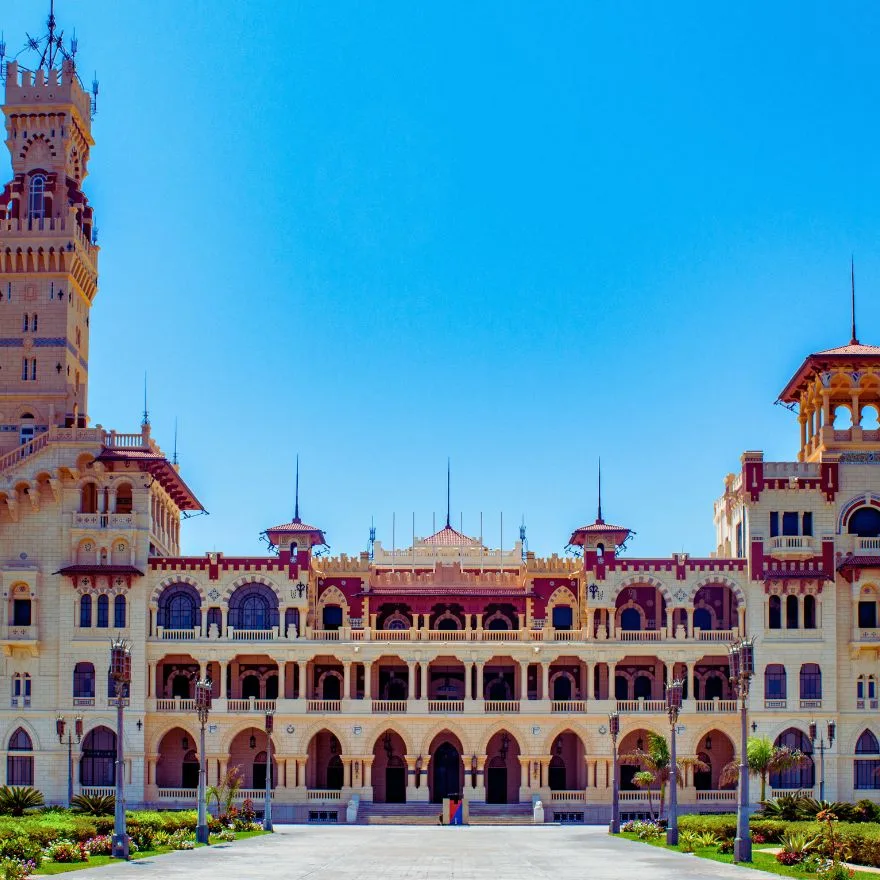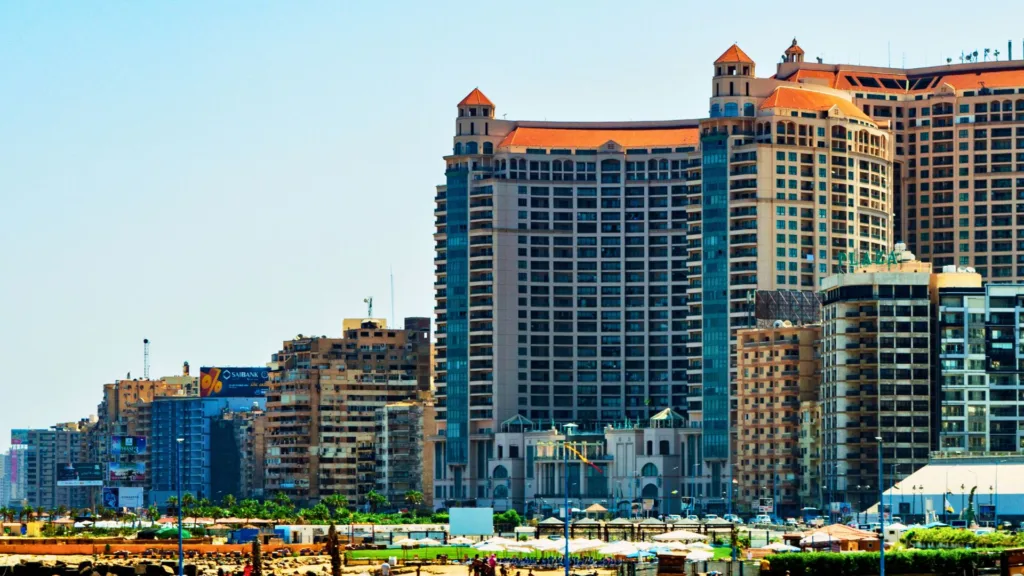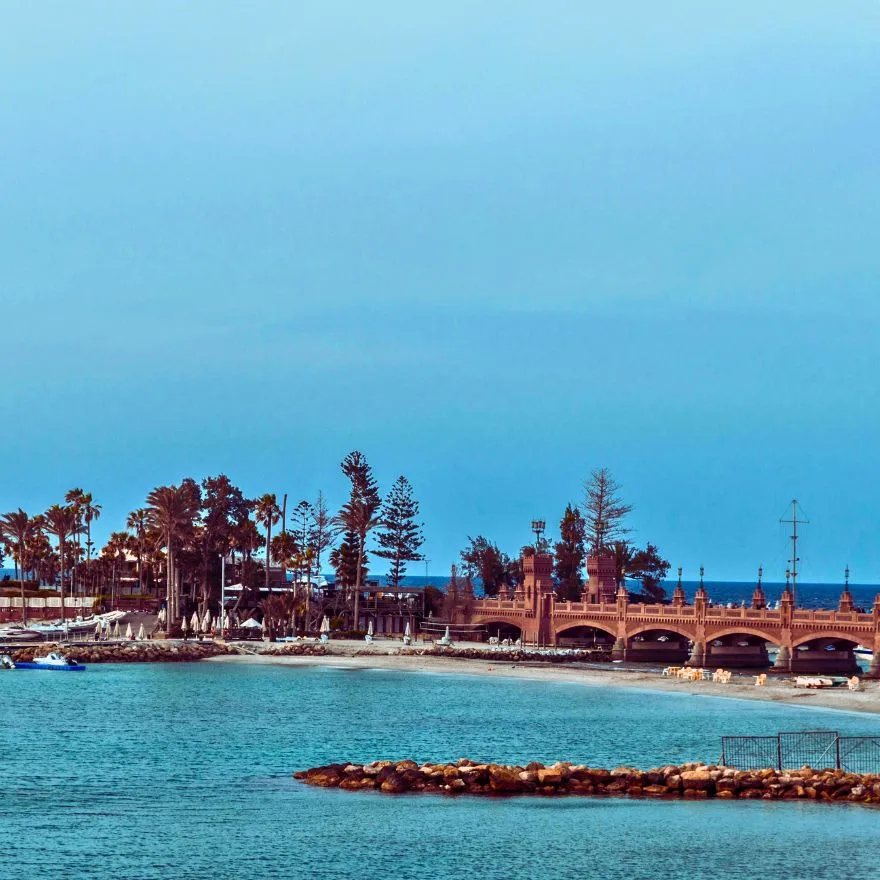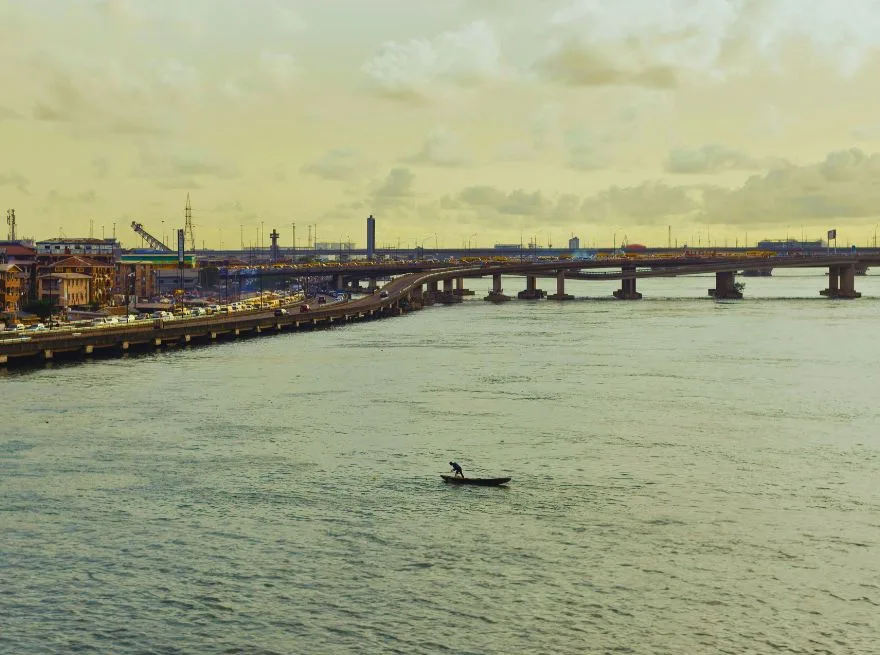Introduction — The City That Breathes in Blue
The first thing I felt in Alexandria was salt. It clung to my skin like a whisper of eternity, carrying stories older than empires. The city unfolded before me like a mirage — domes gleaming in sunlight, faded palaces gazing toward a restless sea, and waves that seemed to hum verses from forgotten poets.
Here, history doesn’t rest beneath the sand — it walks beside you. And as I began my five days in this Mediterranean dream, I understood that Alexandria is not merely a place to visit — it’s a place to remember who you are beneath the noise of time.
Citadel of Qaitbay — The Sea’s First Guardian
I began my journey at the Citadel of Qaitbay, standing proud at the edge of the sea. Built in the 15th century by Sultan Al-Ashraf Qaitbay, it guards the same spot where the legendary Lighthouse of Alexandria, one of the Seven Wonders, once rose.
The wind there feels ancient. I leaned against the stone walls, watching fishing boats sway below. Each wave carried an echo — not just of centuries past, but of the resilience that defines Alexandria’s spirit. Inside, arched corridors and narrow stairs reveal glimpses of the sea through slits of light, reminding you that defense once meant devotion.
- Entrance fee: Around 60 EGP (~2 USD).
- Best time: Early morning to avoid crowds and catch the golden shimmer.
- If it rains: Visit the Royal Jewelry Museum instead — a hidden gem of opulence tucked inside a former palace in Zizinia.
Bibliotheca Alexandrina — A Temple of Light

If the Citadel is the guardian of the sea, the Bibliotheca Alexandrina is the guardian of the mind. Rising from the coastline like a tilted sun, its circular design nods to the ancient Library of Alexandria — the beacon of human knowledge lost to fire and legend.
Inside, light pours through thousands of etched skylights, illuminating scholars, dreamers, and travelers alike. I wandered among manuscripts and art galleries, feeling that quiet thrill only great libraries evoke — the pulse of civilization humming softly under one roof.
- Entrance fee: Around 70 EGP (~2.25 USD) for the main library.
- Tip: Don’t miss the Manuscript Museum and the Antiquities Museum inside — they bridge ancient wisdom with modern curiosity.
If the library closes early, stroll along the Corniche, a long promenade where locals gather to watch the sea dissolve into dusk. There’s poetry in every horizon here.
Kom El Shoqafa — Where the Ancient and the Afterlife Meet
Day three drew me beneath the surface — into the Catacombs of Kom El Shoqafa, one of Alexandria’s most fascinating archaeological wonders.
A spiral staircase leads you down into chambers where Egyptian, Greek, and Roman styles merge — sphinxes beside Doric columns, mummies beside marble.
It’s more than a burial site; it’s a dialogue between worlds. The air is heavy, not with gloom, but with reverence. Down here, faiths once blended and time blurred.
- Entrance fee: Around 80 EGP (~2.6 USD).
- Travel tip: You can reach it by taxi or Careem (ride app) for around 50–70 EGP from the Corniche.
Pompey’s Pillar — A Column Through Centuries
From the shadows of the catacombs, I stepped into the sun-drenched expanse of Pompey’s Pillar, a solitary column rising almost 27 meters high — all that remains of the ancient Serapeum Temple. Despite its name, it has nothing to do with Pompey the Roman general; instead, it was dedicated to Emperor Diocletian.
Standing there, I felt the strange humility of being small among remnants of eternity. The granite column catches the afternoon light like a promise that not even ruin can erase memory.
- Entrance fee: Around 60 EGP (~2 USD).
- Tip: Visit during golden hour — it’s quieter, and the surrounding ruins glow with amber grace.
Abu al-Abbas al-Mursi Mosque — The City’s Spiritual Heartbeat
No visit to Alexandria feels whole without the Abu al-Abbas al-Mursi Mosque, whose white domes and minarets seem to hover above the old port like drifting clouds. Built in the 18th century, it honors the Andalusian Sufi saint who made Alexandria his final home.
The courtyard marble gleams beneath your feet, and the call to prayer rolls like a tide across the harbor. Inside, intricate geometric carvings and golden calligraphy evoke the rhythm of devotion.
I sat quietly, listening to the prayers dissolve into the hum of traffic — the sacred and the ordinary mingling like salt and air.
- Note: Modest clothing required; women should bring a scarf to cover their hair.
- Nearby: Try a mint tea or Turkish coffee at Trianon Café, a century-old haunt once frequented by writers and revolutionaries.
Montaza Palace — Gardens of Forgotten Royalty
The next day led me east to the Montaza Palace Gardens, a world of turquoise and green where Egypt’s last kings once sought respite from Cairo’s heat. The palace, with its Italianate towers and Moorish arches, overlooks the Mediterranean with wistful elegance.
Locals picnic under palm trees, and couples stroll through rose gardens that seem suspended in another era.
For a small fee, you can wander the vast gardens, breathe in the jasmine air, and let the sea breeze brush your face like a benediction.

- Entrance fee: Around 50 EGP (~1.6 USD).
- Tip: A taxi from downtown costs around 100–120 EGP.
- If it rains: Visit the Alexandria National Museum nearby — a compact yet mesmerizing collection tracing Egypt’s layered history.
Stanley Bridge — The Sea’s Modern Embrace
At sunset, I walked across the Stanley Bridge, its arches glowing above a restless sea. Built in 2001, it’s Alexandria’s elegant nod to its royal past — lamps inspired by old palaces, golden light spilling over the waves.
Couples leaned on the railings, fishermen cast their lines, and laughter mingled with the crash of tides. I stayed until the last shimmer of daylight surrendered to the neon pulse of the Corniche.
The city had changed so many times — Greek, Roman, Arab, Ottoman, modern — yet somehow, it remained itself: forever gazing toward the horizon.
Staying connected
Even in a city woven with echoes of the past, staying connected feels like part of the modern traveler’s alchemy. I used DrimSim — a global SIM that quietly follows you across borders without the weight of roaming worries. It kept my digital compass steady, whether I was tracing the curve of the Corniche or finding my way through Montaza’s quiet gardens. The beauty of it? No contracts, no surprise costs — just a whisper of Wi-Fi wherever the wind carried me.
Hidden Corners & Lesser-Known Gems
Beyond its famous sites, Alexandria holds treasures tucked between ordinary streets.
- Café Delices: A nostalgic stop on Saad Zaghloul Square with the scent of roasted coffee and time.
- Gallery of Fine Arts: A quiet haven for Egyptian painters and sculptors — entry is free, and serenity is priceless.
- Anfushi Quarter: Wander its narrow lanes near the harbor for glimpses of everyday Alexandria — fishermen, pastel walls, and echoes of old Andalusian songs.
If You Go
- Best time to visit: March–June or September–November (pleasant weather, fewer crowds).
- Currency: Egyptian Pound (EGP). Carry small notes for taxis and cafés.
- How to get there: 3-hour train from Cairo (approx. 120–200 EGP / $4–6) or private car rental (from $40/day).
- Getting around: Uber and Careem available; taxis common but confirm fare before riding.
- Where to stay: Try a seafront boutique like Steigenberger Cecil Hotel — historic charm with Mediterranean views.
Getting around
To wander Alexandria beyond its main arteries is to feel the rhythm of local life — from fishermen along the harbor to the lemon scent of unseen streets. For that freedom, I turned to DiscoverCars, a trusted way to rent with transparency and ease. It allowed me to move between landmarks and little-known corners on my own time — no timetables, no waiting — just open roads, salt air, and the timeless hum of the Mediterranean beside me.
Internal Links — Read Next on Inner Soar
- Digital Peace: Setting Healthy Boundaries with Devices While Traveling
- The Art of Waiting: How Travel Delays Can Become Sacred Pauses

Closing Reflection — The Sea’s Memory
On my final morning, I stood again by the water. The waves moved with their usual indifference, yet I felt their gaze upon me — ancient, knowing. Alexandria is not a city that gives itself all at once; it reveals itself slowly, through scent, sound, and silence.
As the wind tangled through my hair, I realized I hadn’t simply visited a place — I had walked through the layers of time itself.
And somewhere between the sea’s sigh and the city’s hum, I found a truth only travel can teach:
that some journeys aren’t meant to end; they’re meant to echo.


